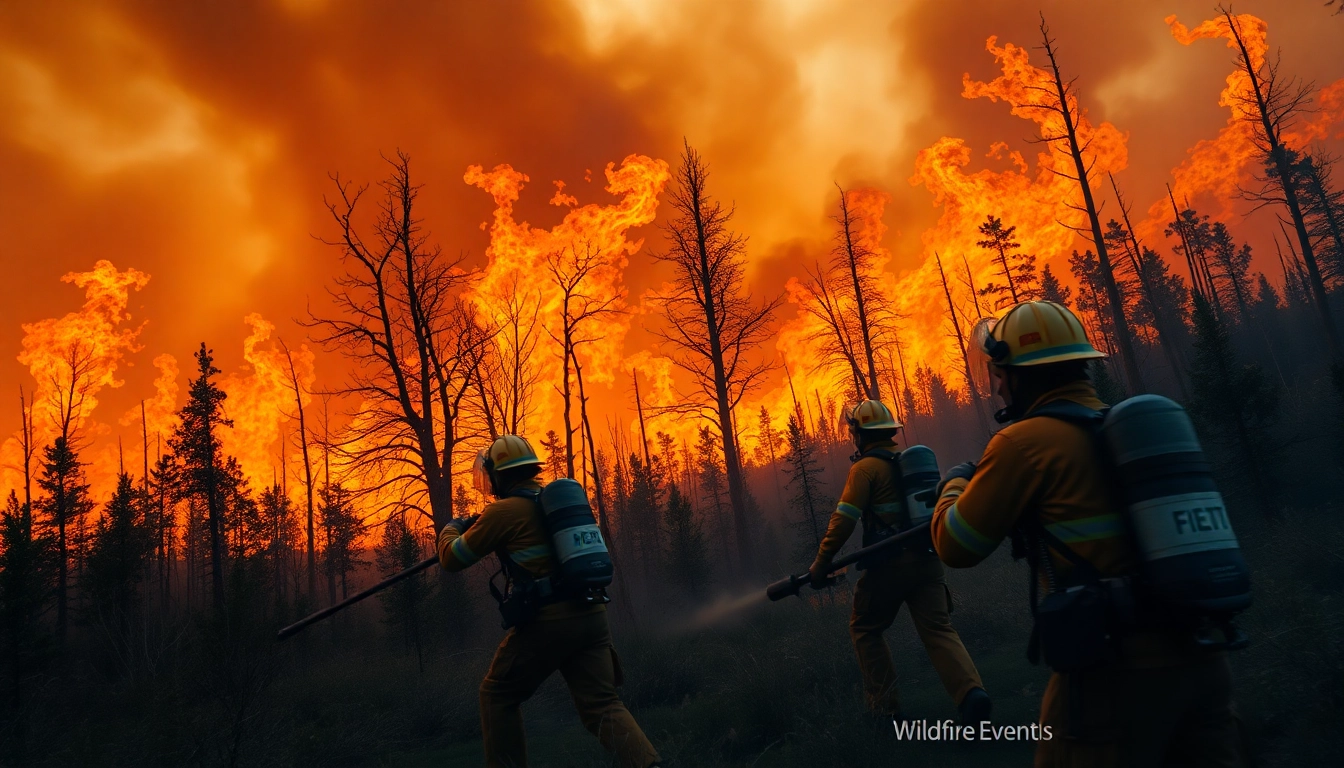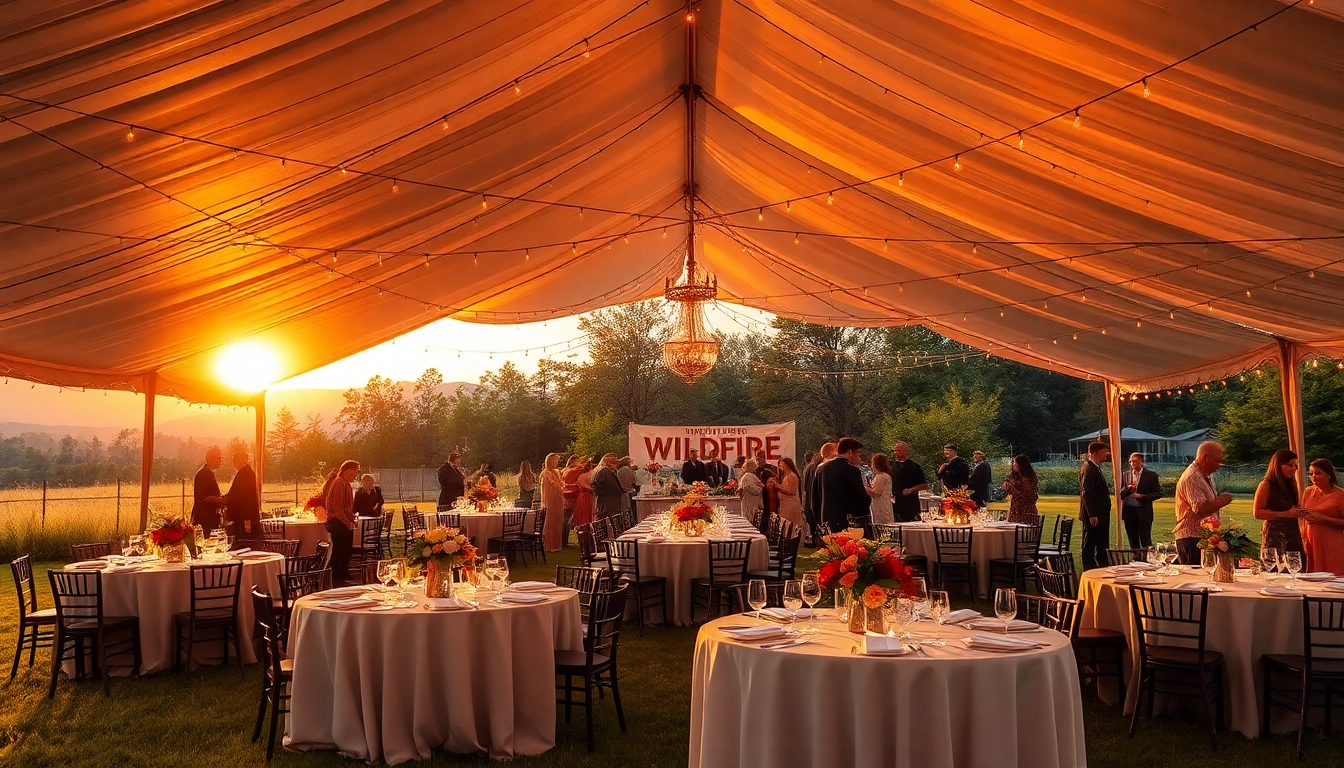The Science Behind Wildfire Events
Wildfire events are complex phenomena influenced by a multitude of factors. These uncontrollable natural occurrences not only pose significant environmental threats but also have profound impacts on human communities and economies. Understanding the science behind these wildfires is crucial for effective management and mitigation. This in-depth analysis will explore various facets of wildfire events, from their behavior and underlying causes to the prevailing climate issues exacerbating their frequency and intensity.
Understanding Wildfire Behavior
Wildfires are classified based on their patterns and behaviors, which can be influenced by several variables. Key factors include the type of vegetation present, the topography of the landscape, and the prevailing weather conditions. The National Interagency Fire Center offers insights into understanding fire potential and behavior, particularly during critical periods when fire activity is high. The behavior of wildfires can be categorized into three primary types: surface fires, ground fires, and crown fires.
Surface fires are the most common, burning through grass, underbrush, and small shrubs. These fires tend to be less intense but can spread rapidly under favorable conditions. Ground fires burn beneath the surface, in the humus layer, and can smolder for extended periods, sometimes undetected until they resurface under dry conditions. Crown fires, however, are the most dangerous, as they leap from treetop to treetop, fueled by dry conditions and strong winds. Understanding these behaviors aids in developing effective response strategies to combat wildfires.
Factors Contributing to Wildfire Events
Several natural and anthropogenic factors contribute to the occurrence and intensity of wildfire events. Key factors include:
- Vegetation Type: Certain types of vegetation, such as coniferous trees, can be more flammable, thereby increasing the risk of wildfires.
- Weather Conditions: Drought, high temperatures, and strong winds can significantly increase wildfire risks. For example, the hot, dry winds known as Santa Ana winds in Southern California can exacerbate fire risk during dry seasons.
- Human Activity: A significant percentage of wildfires are ignited by human activity, including campfires, discarded cigarettes, and power lines. According to studies, approximately 85% of wildfires in the United States are human-caused.
Climate Change and Its Role
Climate change has emerged as a daunting challenge in addressing wildfire events. Rising temperatures have led to prolonged dry spells, increasing drought conditions in various regions, and changing precipitation patterns. Furthermore, warmer climates allow vegetation to grow in previously inhospitable areas, creating more fuel for potential wildfires. Experts link the escalation of wildfire frequency and intensity to changing climate norms, advising communities to adapt their wildfire responsiveness strategies accordingly. Various studies indicate that by 2050, wildfires could increase substantially in frequency and area burnt, especially in forested regions across the global landscape.
Historical Perspective on Wildfire Events
The historical context of wildfire events offers valuable insights into their development over time, the lessons learned from past experiences, and emerging trends that shape current strategies for wildfire management.
Major Wildfire Events in History
Some of the most devastating wildfires have resulted in loss of life and property, leading to significant changes in firefighting policies and practices. Events such as the Great Fire of 1910 in the Western United States, which burned approximately 3 million acres, and the more recent California wildfires have intensified awareness around wildfire preparedness. These historical events often serve as turning points—prompting governmental and organizational changes in response approaches to wildfire management.
Lessons Learned from Past Wildfires
Wildfire events in the past have led to essential lessons regarding prevention and response. Some of the most critical lessons gleaned from these events include:
- Importance of Preparedness: The necessity for communities and land management agencies to develop and implement wildfire preparedness plans has become evident. Effective planning can save lives and property.
- Resource Allocation: The allocation of resources, such as funding for training fire personnel and investing in technology for early detection systems, is vital.
- Community Awareness: Raising awareness through educational campaigns on wildfire risks and safety measures greatly contributes to reduced impacts during fire seasons.
Emerging Trends in Wildfire Events
As climate change continues to evolve, so too do wildfire events. Emerging trends include:
- Increased Frequency: Analysis indicates a rise in the frequency of wildfires worldwide, particularly in areas that experience seasonal drought.
- Longer Fire Seasons: The period during which wildfires are most active is extending, leading to a longer window for potential ignition events.
- Technological Advances: Improved technology and data analysis techniques are beginning to revolutionize wildfire management, facilitating real-time tracking and risk assessment.
Wildfire Events Management Techniques
Efficient management techniques are crucial to mitigate the risk and impact of wildfire events. This includes a combination of preventive measures, firefighting strategies, and community engagement initiatives.
Preventive Measures for Wildfire Events
Preventive measures are the first line of defense against wildfires. Strategies include:
- Controlled Burns: Implementing prescribed burns in forested areas can reduce fuel loads, lowering wildfire susceptibility.
- Land Use Management: Policies that restrict development in high-risk fire zones help safeguard communities and wildlife habitats.
- Education and Training: Providing education on fire safety and preparedness can empower individuals and communities to protect themselves before and during wildfire events.
Firefighting Strategies and Technologies
Advanced firefighting strategies and technologies play an essential role in combating wildfires. Notable methods include:
- Aerial Support: Utilizing helicopters and planes to drop water and fire retardants can help slow down wildfire progression.
- Firebreaks: Creating clearings devoid of vegetation can act as barriers to slow or stop a wildfire.
- Geospatial Technology: Leveraging GIS and drone technology assists in mapping wildfire spread and managing resources efficiently.
Community Engagement in Wildfire Management
Community involvement is vital for effective wildfire management. Strategies to enhance community engagement include:
- Firewise Communities: Programs that promote fire-safe landscaping and building techniques reduce risks in wildfire-prone areas.
- Local Emergency Planning Committees: These committees foster collaborative approaches to emergency preparedness, involving local residents in planning and response.
- Volunteer Programs: Engaging local volunteers in firefighting efforts can bolster resources and train more individuals in response efforts.
The Psychological and Economic Impact of Wildfire Events
The repercussions of wildfire events reach far beyond the physical destruction of properties, influencing human psychology and local economies. The emotional trauma and economic losses endured can last for years.
Effects on Communities and Families
Wildfires have devastating psychological impacts on affected communities and families. Survivors may experience PTSD, anxiety, and depression following the loss of homes, belongings, and even loved ones. Such emotional scars necessitate targeted mental health interventions and support systems to assist recovery in the aftermath of destructive wildfires. Additionally, the disruption of community cohesion can have long-term implications on social infrastructure.
Insurance and Economic Losses from Wildfire Events
Insurance claims related to wildfire damage can soar into billions of dollars, straining local economies and affecting insurance markets. Homeowners often face increased premiums following wildfire events, while businesses may suffer due to decreased clientele and instability in affected regions. Governments also experience weighty economic consequences due to firefighting costs and rebuilding initiatives. Developing robust insurance frameworks and assistance programs becomes vital for recovery and long-term sustainability.
Long-term Recovery Strategies
Addressing the aftermath of wildfire events requires comprehensive long-term recovery strategies, which may include:
- Community Resilience Planning: Developing plans that enhance community resilience focus on rebuilding stronger and smarter, prioritizing fire-resistant building regulations and landscaping practices.
- Mental Health Services: Providing accessible mental health services and support groups assists individuals and families in recovering from trauma associated with wildfires.
- Infrastructure Restoration: Investing in infrastructure improvements, such as enhanced water systems and emergency evacuation routes, strengthens community preparedness for future incidents.
How to Prepare for Wildfire Events
Preparation is key in minimizing the impact of wildfire events. Communities and families can take several proactive steps to safeguard themselves and their properties.
Emergency Preparedness Plans
Crafting comprehensive emergency preparedness plans is essential. These plans should encompass:
- Evacuation Routes: Designating and practicing evacuation routes ensures swift response during emergencies.
- Emergency Supply Kits: Maintaining kits with essential supplies such as food, water, medications, and firefighting tools can make a critical difference.
- Communication Plans: Clear communication pathways, including regularly updated contact lists and methods for relaying timely information, enhance community response capabilities.
Building Fire-Resilient Communities
Community resilience can be bolstered through various fire-wise measures. Strategies include:
- Fire-Resistant Landscaping: Utilizing non-flammable plants and creating defensible spaces around homes can reduce fire risk.
- Building Codes: Adopting and enforcing strict building codes that prioritize fire resistance features can enhance community safety.
- Regular Maintenance: Encouraging residents to regularly maintain their properties, including the removal of dead vegetation, helps mitigate fuel loads.
Tools and Resources for Safety
Access to reliable tools and resources can significantly improve preparedness and response to wildfire events. This includes:
- Local Alerts and Warnings Systems: Communities should utilize and promote systems alerting residents about impending wildfire threats.
- Educational Programs: Ongoing education through workshops and community meetings ensures residents stay informed about wildfire risks and prevention strategies.
- Online Resources: Websites like the wildfire events platform can provide real-time information on fire status and safety tips.
In conclusion, understanding wildfire events entails consideration of a spectrum of scientific, environmental, historical, and societal factors. The escalating impacts of climate change necessitate improved management techniques that include proactive prevention, responsive firefighting strategies, and active community engagement. By investing in preparation, education, and resilience, families and communities can effectively navigate the challenges wildfires present today and in the future.



